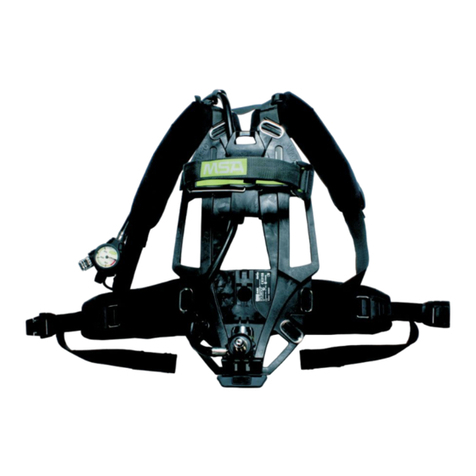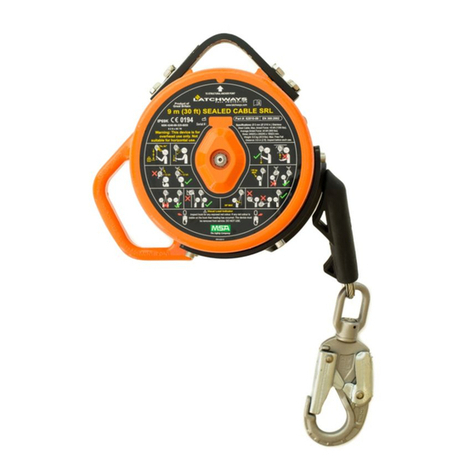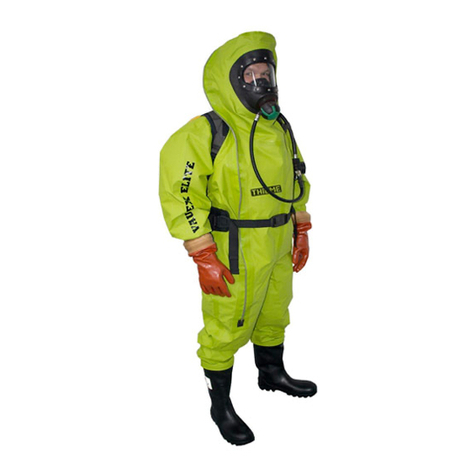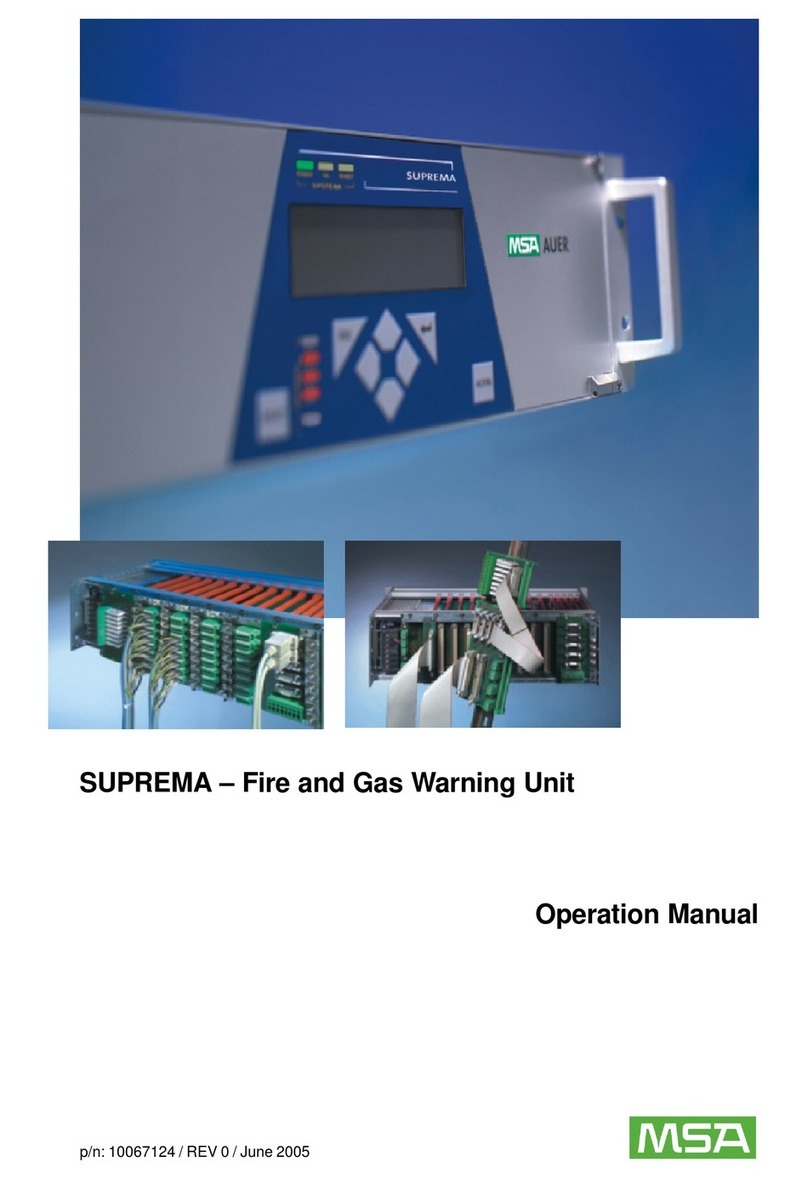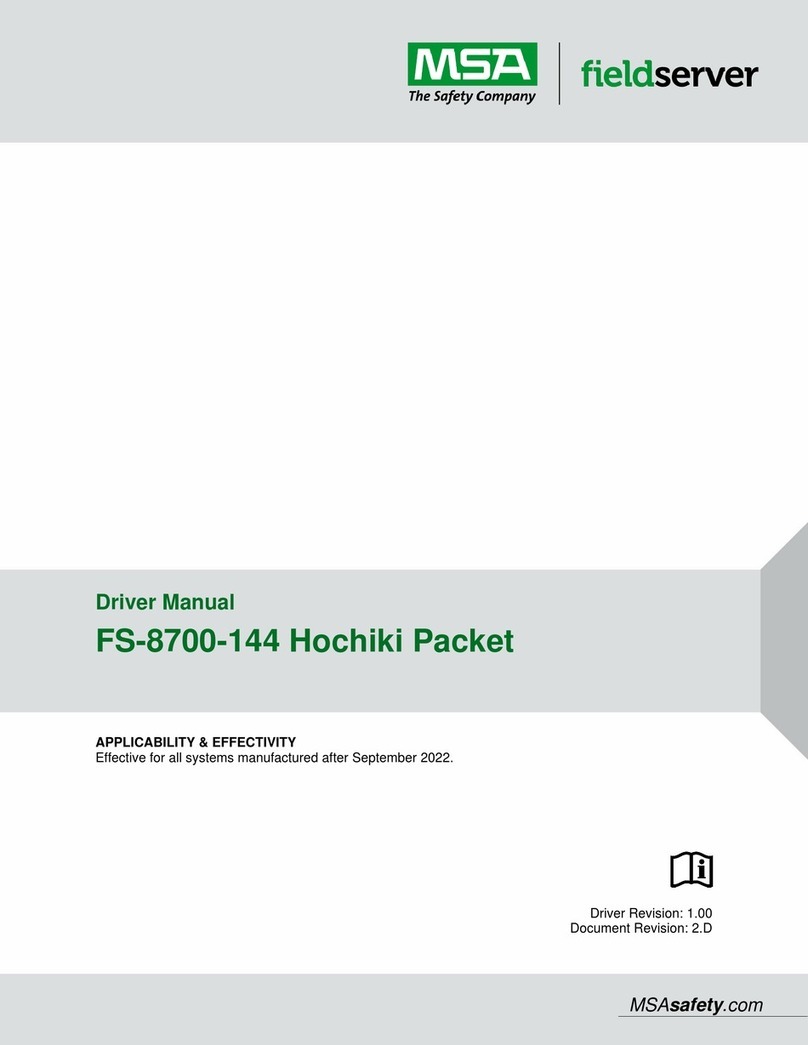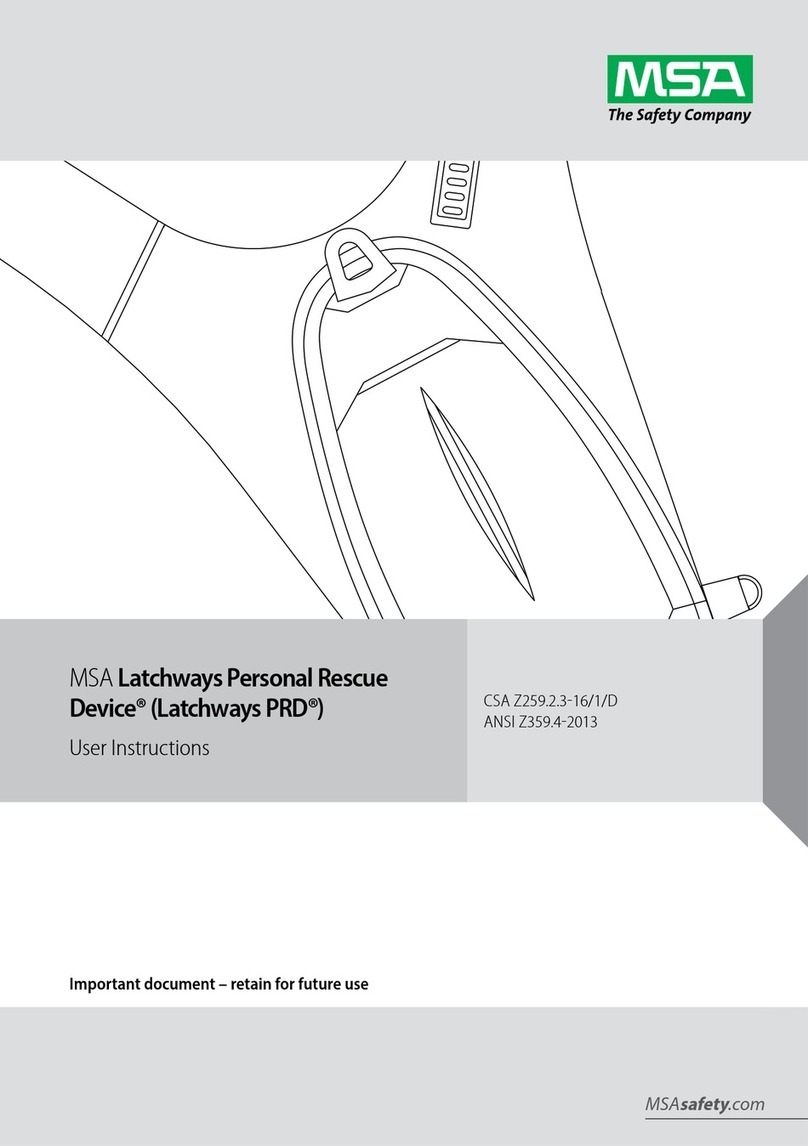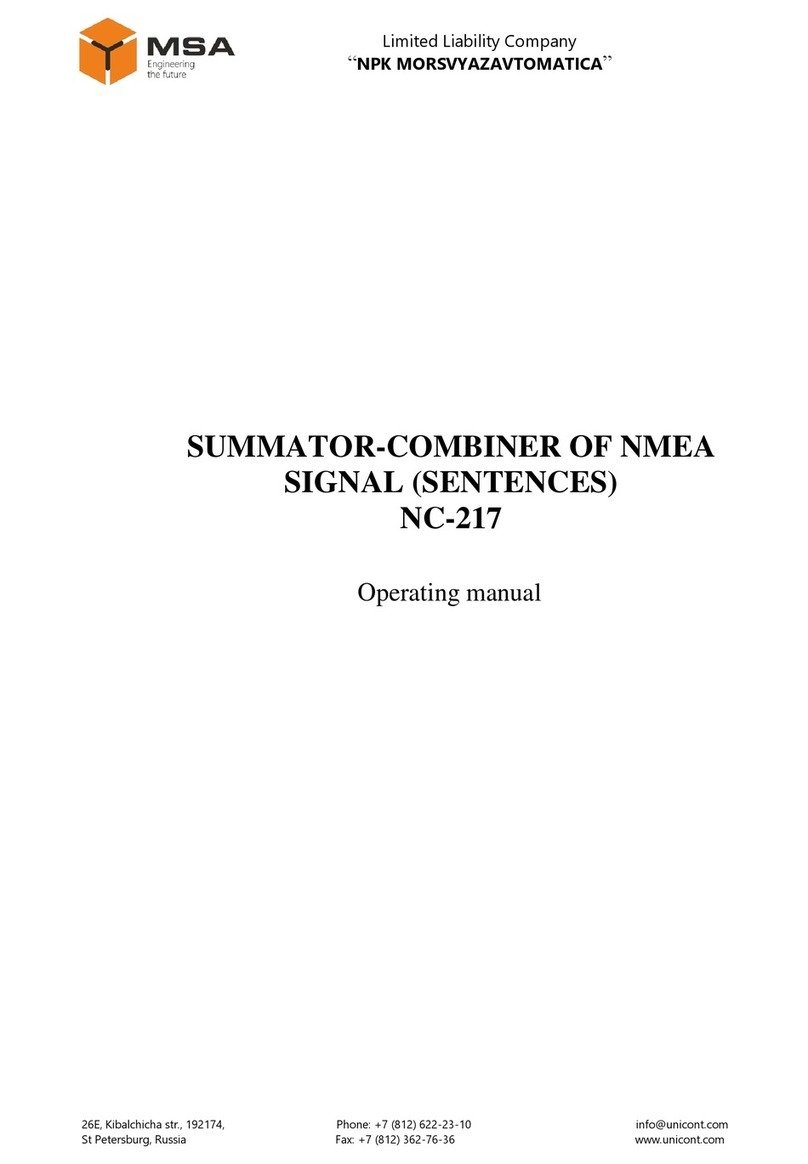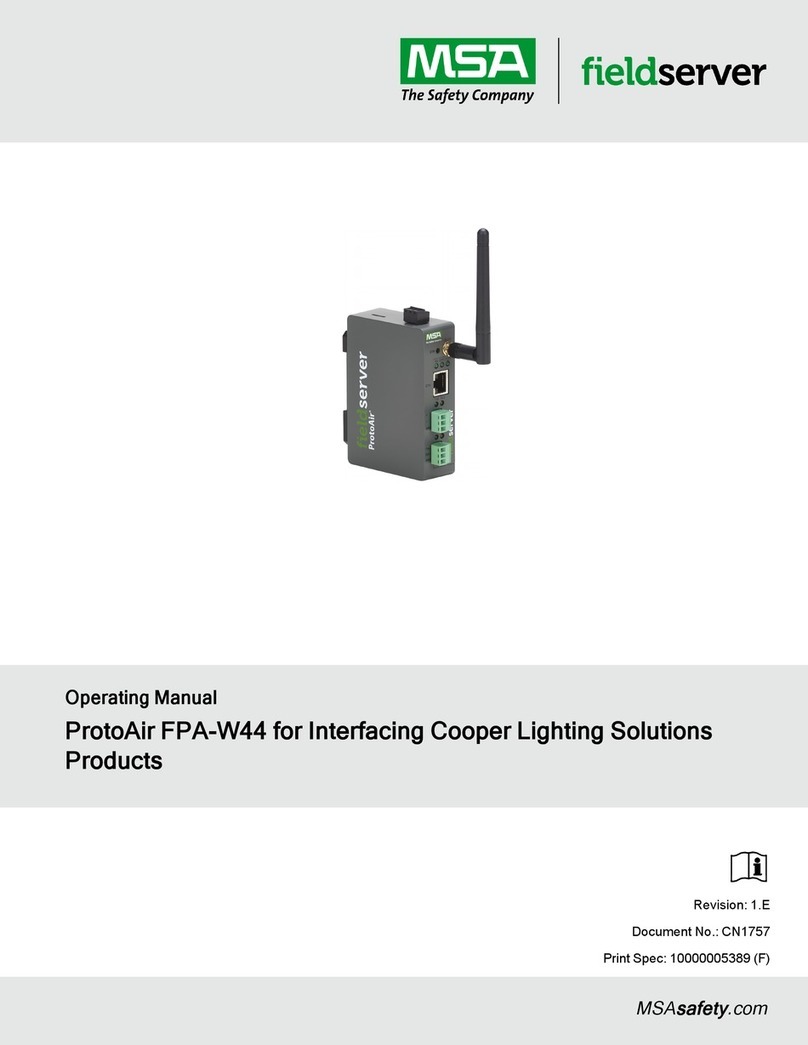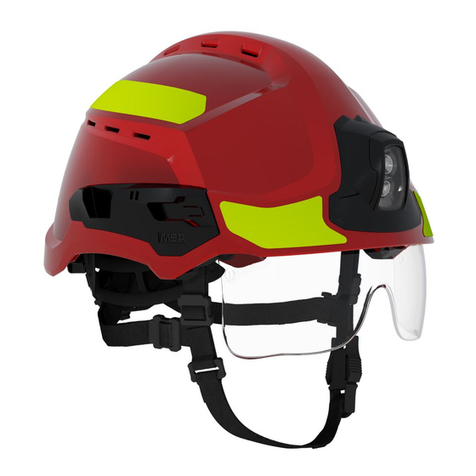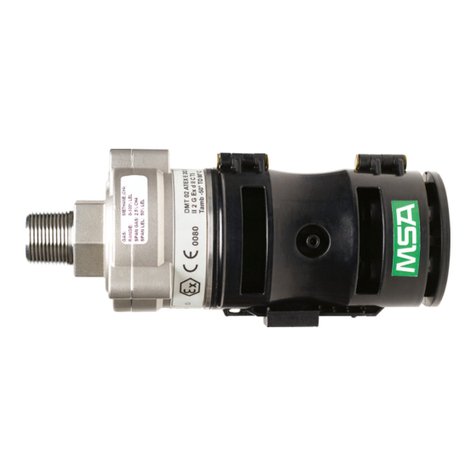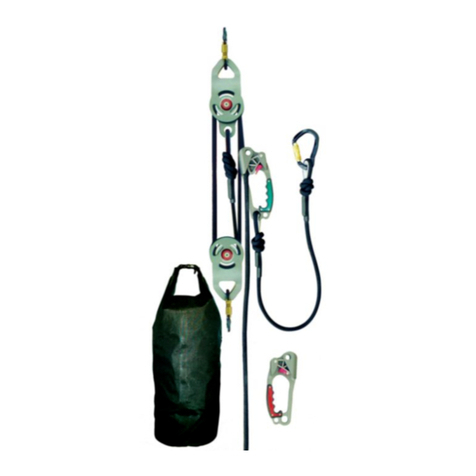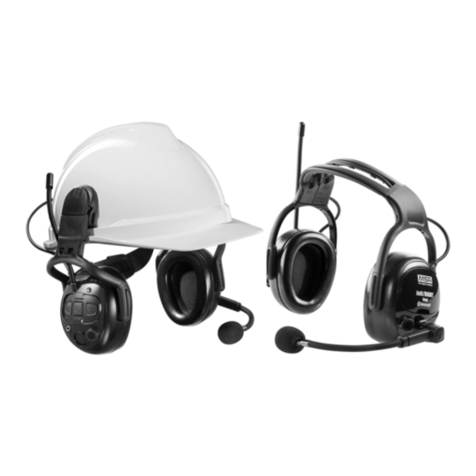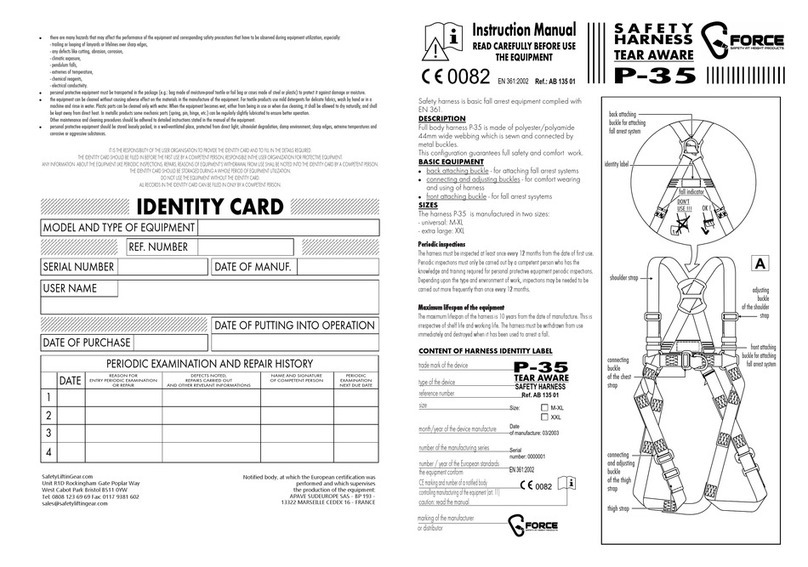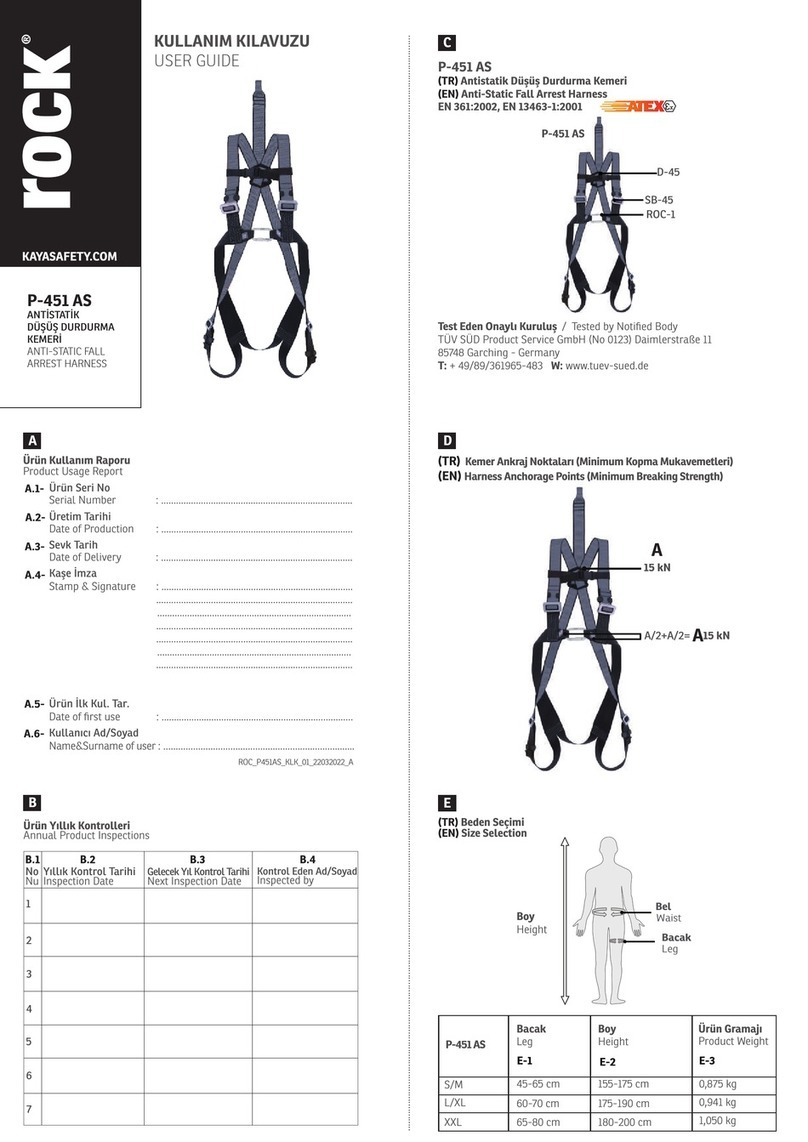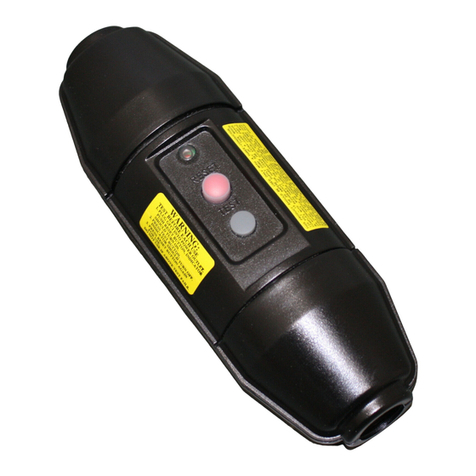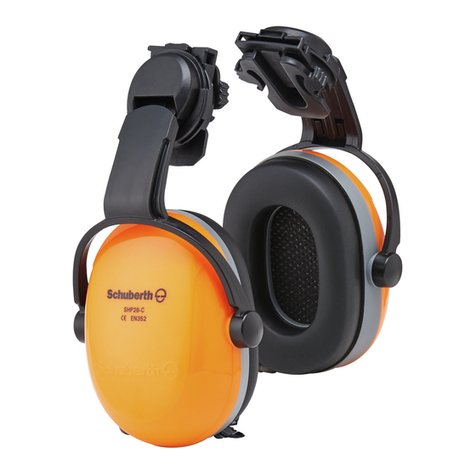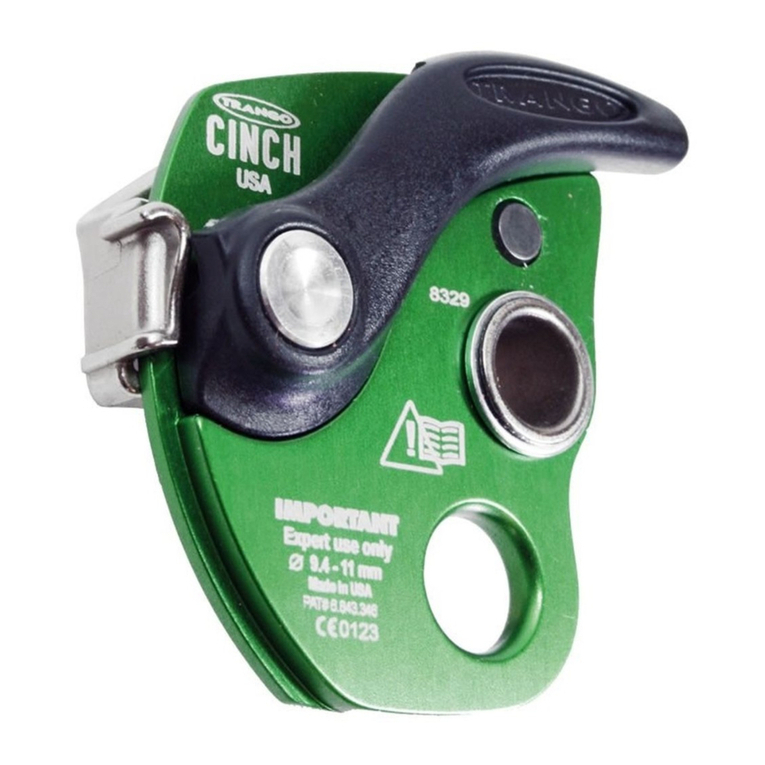
USER INSTRUCTIONS LYNX TRIPOD Page 9
Copyright © 2002, MSA P/N 10022053
5.1 COMPATIBILITY OF SYSTEM PARTS
5.1.1 COMPATIBILITY OF COMPONENTS AND SUBSYSTEMS:
Lynx Tripod anchorage connectors are designed to be used with MSA approved components and connecting
subsystems. Use of the Lynx Tripod with products made by others that are not approved in writing by MSA may
adversely affect the functional compatibility between system parts and the safety and reliability of the complete
system. Connecting subsystems must be suitable for use in the application (e.g. fall arrest, climbing protec-
tion, rescue or evacuation). MSA produces a complete line of connecting subsystems for each application.
Contact MSA for further information. Refer to the manufacturer’s instructions supplied with the component or
connecting subsystem to determine suitability. For fall arrest applications using the Lynx Tripod, the maximum
fall arrest force must not exceed 1,800 lbf (8 kN). Contact MSA with any questions regarding compatibility of
equipment used with the Lynx Tripod.
5.1.2 COMPATIBILITY OF CONNECTORS:
Connectors, suchas D-rings,snaphooks, andcarabiners, mustbe rated at5,000 lbf(22 kN)minimum breakingstrength.
MSA connectors meet this requirement. Connecting hardware must be compatible in size, shape, and strength.
Non-compatible connectors may accidentally disengage (“rollout”). Always verify that the connecting snaphook
or carabiner and the D-ring on a full body harness or Lynx Tripod anchorage connector are compatible. Use only
self-closing, self-locking snaphooks and carabiners (as defined and required by ANSI Z359.1) with the Lynx
Tripod.
5.1.3 ANCHORAGES AND ANCHORAGE CONNECTORS:
Anchorages for personal fall arrest systems must have a strength capable of supporting a static load, applied in
directions permitted by the system, of at least: (a) 3,600 lbf (16 kN) when certification exists, or (b) 5,000 lbf (22.2
kN) in the absence of certification. See ANSI Z359.1 for definition of certification. The Lynx Tripod is designed for
connection by a single personal fall arrest system. See section 7.1 for considerations in selecting an appro-
priate anchorage for use with the Lynx Tripod anchorage connector. See ANSI Z359.1, section 7.2.3. This
requirement is consistent with OSHA requirements under 20 CFR 1910, Subpart F, Section 1910.66, Appendix
C. In addition, it is recommended that the user of personal fall arrest systems refer to ANSI Z359.1, Section
7, for important considerations in equipment selection, rigging, use, and training. Contact MSA for information
regarding custom design applications for the Lynx Tripod anchorage connector.
6.0 PLANNING THE USE OF SYSTEMS
Do not use the Lynx Tripod unless a qualified person has inspected the workplace and determined that identified
hazards can neither be eliminated nor exposures to them prevented.
Prior to selecting a Lynx Tripod or other personal protective equipment, the user must make a workplace as-
sessment of hazards and conditions where the equipment is required. Such assessment must, at a minimum,
identify the presence of:
·Hot objects ·Chemicals ·Abrasive surfaces ·Climatic factors
·Sparks ·Electrical hazards ·Moving equipment ·Weather factors
·Flames ·Environmental contaminants ·Moving materials
·Unstable/uneven surfaces ·Heat-producing operations ·Sharp objects · Unguarded openings
·Slippery surfaces ·Confined space hazards
Foreseeable changes in any of these conditions, taken individually or collectively, must be identified, evaluated
and controlled. The materials and construction of the Lynx Tripod and associated equipment must be considered
in the selection process such that these workplace conditions are suitably addressed and responded to. The
equipment must match the work situation and workplace environmental factors.


